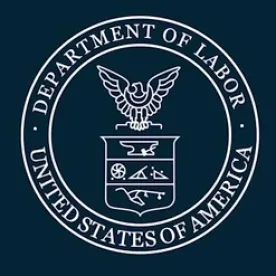On Tuesday, October 6, both the Department of Labor (DOL) and the Department of Homeland Security (DHS) announced regulations that will significantly impact the H-1B visa program. Our alert is broken down in two parts:
-
Part 1: Analysis of DOL regulations, which take effect on Thursday, October 9
-
Part 2 (to be published tomorrow): Analysis of DHS regulations, which take effect 60 days after publication
DOL Regulation on Prevailing Wages
The Department of Labor issued an Interim Final Rule that has almost immediate effect. As of Thursday, October 7, the DOL’s Occupational Employment Statistics (OES) wage data will be revamped. The revised data will dramatically increase the DOL’s prevailing wage data, which is used for H-1B, H-1B1 and E-3 visas, as well as PERM Labor Certifications.
Background
DOL last updated its prevailing wage structure in 2004, and created a four-tiered wage system. The current system classifies the four tiers with corresponding skill levels and the percentile of wage data that sets each wage level as follows:
|
Wage Level |
Skill Level |
Percentile of data for wage level |
|
Level I |
Entry Level |
17th |
|
Level II |
Qualified |
24th |
|
Level III |
Experienced |
50th |
|
Level IV |
Fully Competent |
67th |
While the DOL has never published its underlying data or methodology for creating the wage level amounts, in most circumstances the existing DOL wage data created a reasonable wage system that employers could rely on in determining the appropriate prevailing wage for an H-1B, H-1B1 or E-3 worker. In most cases the DOL wage data generally aligned with market wages.
Revised Wage Data
The Interim Final Rule goes through a lengthy and tortured analysis of PERM application data in an attempt to justify the use of a much higher percentile to set each of the four wage levels. The Rule also references the President’s Executive Order 13788, known as “Buy American and Hire American.” That Executive Order stated an “urgent need for strengthening wage protections in these programs to support economic recovery.” In short, the new rule will result in prevailing wages that are expected to be far higher than industry standards, in an attempt to discourage U.S. employers from hiring foreign workers.
The new breakdown of the four-tiered wage system is as follows:
|
Wage Level |
Skill Level |
Percentile of data for wage level |
|
Level I |
Entry Level |
45th |
|
Level II |
Qualified |
62nd |
|
Level III |
Experienced |
78th |
|
Level IV |
Fully Competent |
95th |
The Level I and Level IV wages promise to be alarmingly high, and will likely far exceed competitive wages currently paid by U.S. employers. Entry level positions (commonly requiring a bachelor’s degree and fewer than two years of experience) will be set nearly at the mid-point of all wage data. Level IV wages (for positions commonly requiring a bachelor’s degree and five or more years of experience) will be at the 95th percentile, which is not reflective of a typical “Fully Competent” professional.
Retroactive Application to PERM Prevailing Wage Requests
The Interim Final Rule confirms that as of October 9, 2020, the revised wage data will be used to make wage determinations on prevailing wage requests that are currently pending with the DOL. This will likely cause harm to U.S. employers who are seeking to file for permanent residence on behalf of foreign national employees, as well as to those that relied on existing wage data in making the decision to initiate sponsorship.
Any prevailing wage determinations that have already been adjudicated by DOL will continue to be valid through their expiration date.
Alternative Prevailing Wage Data Continues to Be Accepted
The one area of the prevailing wage regulations that remains unchanged is the ability to use certain private wage surveys that meet DOL criteria for wage methodology. The new regulations do not change DOL’s standards for determining if a private wage survey is acceptable. Employers who find the new OES wage data unusable can still seek a private wage survey.
Upcoming Guidance from Mintz
Preview of Tomorrow’s Part 2 – Analysis of DHS Regulations
The DHS Interim Final Rule is scheduled to be published on Thursday, October 8, 2020, with an effective date of December 7, 2020. DHS has released an unpublished version. Below is a high-level overview of the rule, which will be discussed in greater detail tomorrow in Part 2 of this Alert.
Definition of “Specialty Occupation”
The DHS rule will restrict the definition of “specialty occupation,” which is the legal standard to determine whether a particular position qualifies for H-1B status. The crux of the “specialty occupation” standard is whether a four-year bachelor’s degree in a “specific specialty” is normally a minimum requirement for that occupation. The current regulation requires a showing that the degree requirement is “normal,” “common” or “usual” to the occupation. The new rule no longer considers what is “normal”, “common” or “usual” among employers and requires a showing that the degree is “always” a requirement for the occupation.
Placement of H-1B Workers at Third-Party Worksites
The validity period of any H-1B petition that includes work at a third-party worksite will be limited to one year. Further, employers must document that there is available work for the H-1B worker, through the submission of “work order(s), statement(s) of work, or other similar legally-binding agreements.”
Definition of “Employer-Employee Relationship”
The rule will formally adopt the criteria that were enumerated in a 2010 USCIS memo that defined “employer-employee relationship.” This standard was deemed to be invalid in a Federal District Court decision in March 2020. This reversion to the prior USCIS standard will likely add additional burdens to all employers filing H-1B petitions.





 />i
/>i

